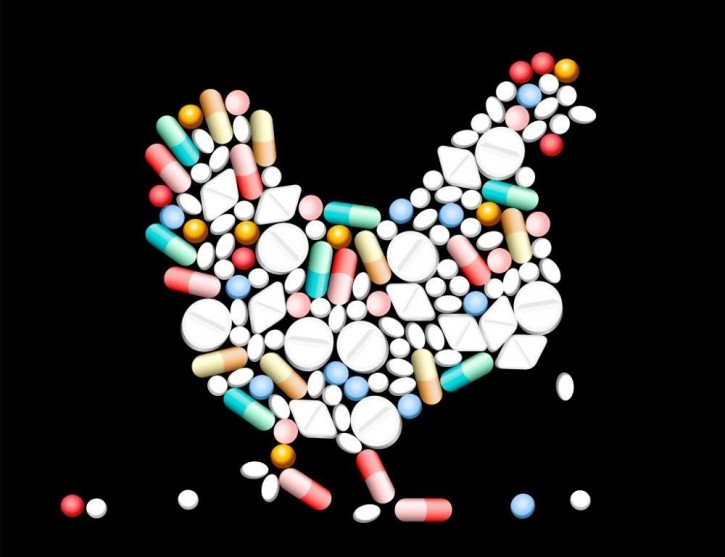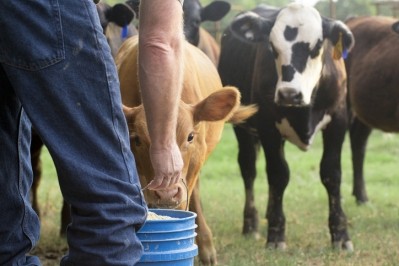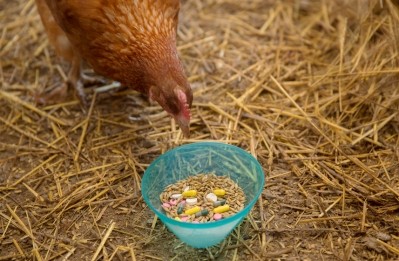Pew report calls for additional actions to improve use of antibiotics in US livestock production

The Pew Charitable Trusts reviewed the labels of antibiotic products that are medically important for humans and used in livestock production and found many approved animal antibiotic labels continue to allow for “injudicious use."
The analysis was done as the US prepares for imminent changes that end the use of medically important antibiotics for growth promotion. The issue brief Judicious Animal Antibiotic use Requires Drug Label Refinements report was released last week.
“Of the 389 labels for medically important antibiotics, about 240 define the conditions for use in a manner consistent with judicious use principles,” noted the Pew report. “However, more than 140 labels do not fully meet FDA’s judicious use standards, and around three-quarters of these potentially problematic labels are for pioneer (brand name or patented) drugs.”
Anne Norris, FDA spokesperson, told us: “All drug manufacturers affected by the plan have agreed to voluntarily remove production uses and change the marketing status of their products from over-the-counter use to use requiring veterinary oversight by the end of December 2016,” she said. “Once these changes have been made, these products can no longer be legally used for production (growth promotion/feed efficiency) purposes and may only be used with the prior authorization of a licensed veterinarian for valid therapeutic purposes.”
However, the Pew organization called on the FDA to continue its efforts to revise the labels of medically important antibiotics used in feed to ensure judicious use, even after the new rules limiting growth promotion uses take effect.
“This analysis shows that the problem is manageable and identifies the biggest issue areas, which can help FDA decide how to prioritize resources for the review and revision of antibiotic labels,” said the report authors. “For example, because use of feed drugs in ways that deviate from label instructions is illegal, review of these labels may be a particular priority for FDA.”
The agency should set a plan and timeline for future label revisions, they added.
FDA response
The FDA is planning to continue working to support judicious use of antimicrobials, said Norris. Ongoing efforts include a recent request for comment on setting usage windows for drugs that currently lack them.
“In 2015, the FDA identified this issue as an important next step in its ongoing effort to ensure that medically important antimicrobials are used judiciously,” she said. “The agency does not believe such use is judicious and has been actively engaging veterinary organizations, animal producer organizations and other stakeholders to address this concern.”
Duration of use
To promote judicious use of the antibiotic, products should only be used long enough to achieve the needed result.
“Of the 389 labels, over 100 lack adequate restrictions on the duration of use, several labels do not specify a narrowly defined dosage, and 80 labels raise concerns about whether the specified indication is judicious,” concluded the Pew analysis.
Tylosin and tetracycline-based items were the most common to lack a definitive use period, said the authors of the report. Almost 110 in-feed products for production animal groups including cattle, swine and poultry did not have a defined usage window.
But some of the products do have alternative labels giving a more definitive usage period, they continued. “Therefore, scientifically based duration limits are available, although product-specific differences have to be considered, for example in administration routes (i.e., via feed, water, or other routes such as injection) or product formulation,” said the reviewers.
“In addition, a few labels specify durations of use far exceeding two or three weeks. For example, some labels for tylosin in feed list an administration of up to six weeks for the treatment and control of swine dysentery,” they said. “Finally, some problematic labels have duration limits that are tied to poorly defined external factors, such as during ‘times of stress.’”
Disease management
The authors also found challenges in what some of the drugs were approved to manage. Problems were found with recommendations of product use for weight gain in times of stress or disease challenge; early morality when the disease was not specified; disease prevention during stress; and to manage a disease, like liver abscesses in cattle, that could be prevented through animal handling.
Several of the drugs reviewed also lacked specific dosage requirements, according to the reviewers. Fourteen fed antibiotics were among those found to have a “wide dosage range.”
“It may not be feasible in all cases to specify a narrow dose tied to the weight of the animal and in some instances veterinarians may have to adjust dosages based on the specifics of a case; however, because selecting the right dosage is central to ensuring efficacy, labels that do not specify dosage based on an animal’s weight or provide for an inordinately wide dosage range should be critically reviewed to ensure they are consistent with FDA criteria for judicious use,” they said.








